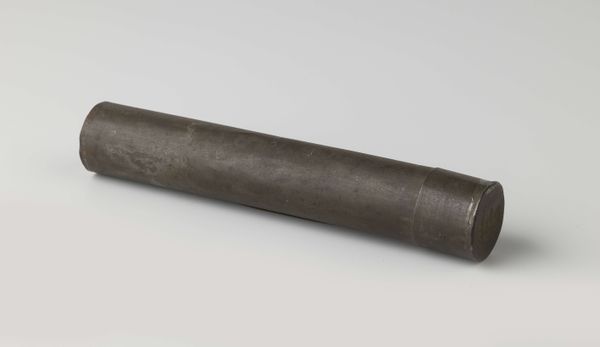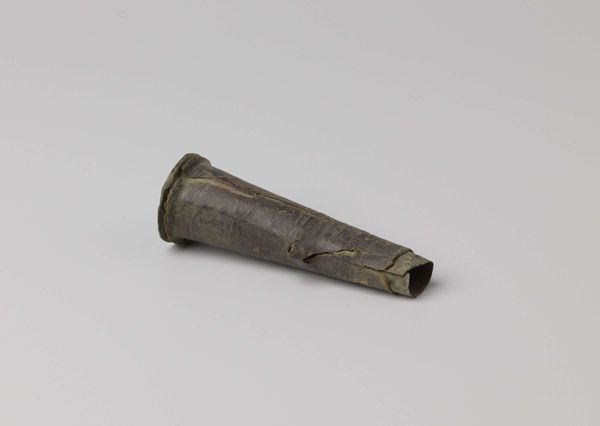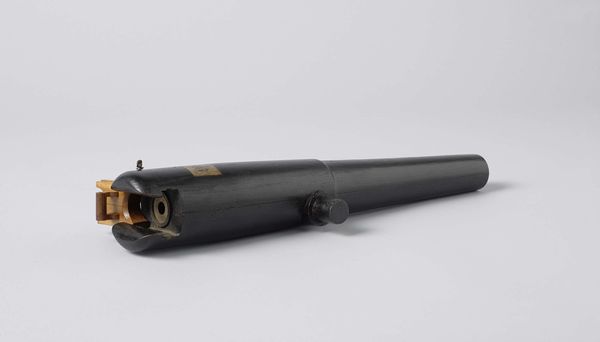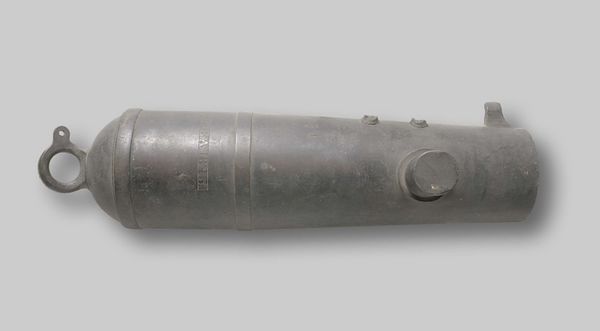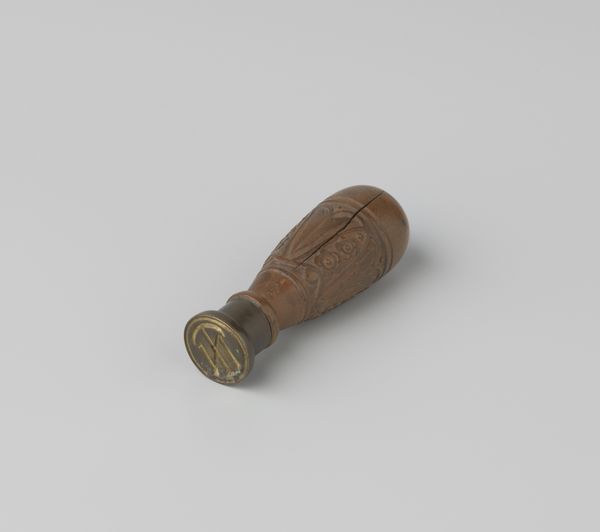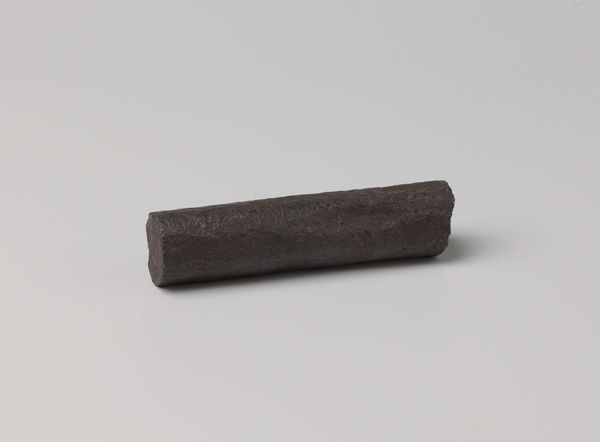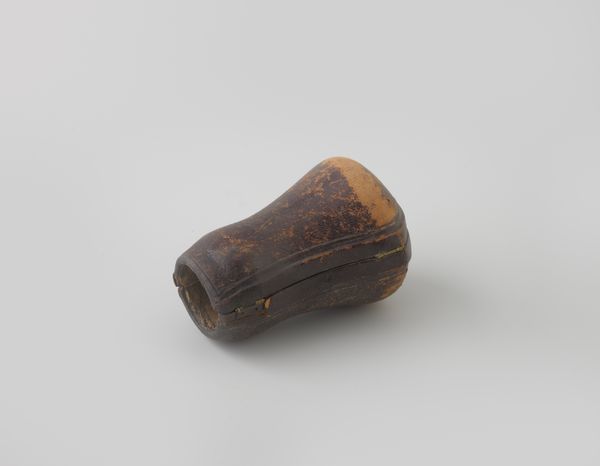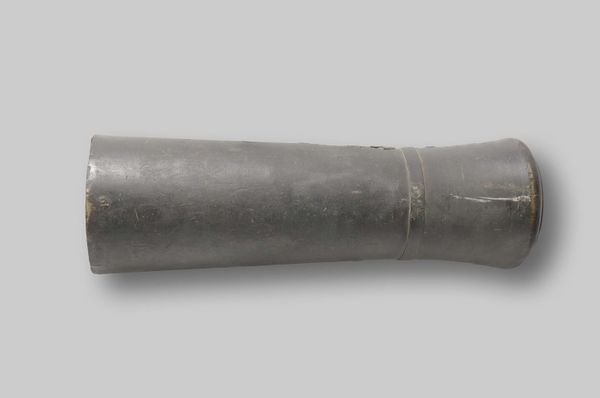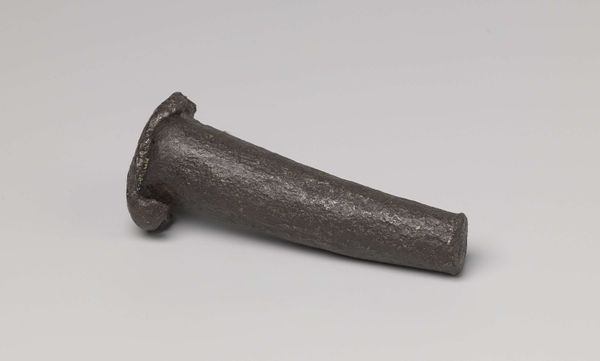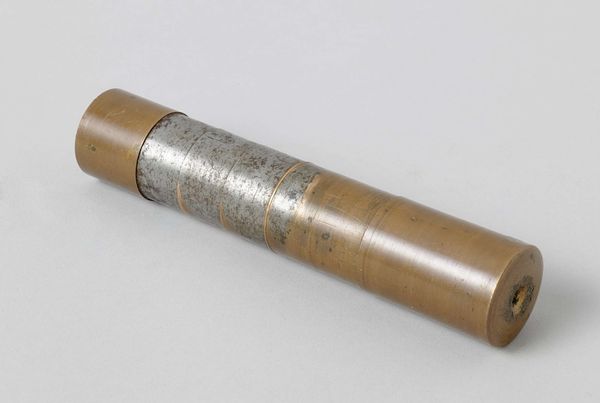
sculpture, wood
#
form
#
11_renaissance
#
geometric
#
sculpture
#
wood
Dimensions: length 8.5 cm, diameter 2.4 cm
Copyright: Rijks Museum: Open Domain
Editor: We’re looking at a wooden object titled "Wimpelstok van hout, fragment" from around 1590 to 1596. It’s on display here at the Rijksmuseum. It looks like the end of a pole…almost like a minimalist sculpture. What do you see in it? Curator: A fragment indeed, pregnant with symbolic weight, though muted by time. Do you notice the geometric form, almost deceptively simple? A cylinder tapering to a rounded end? Consider the pole itself - a staff, a scepter, a flagstaff. Each speaks of authority, direction, proclamation. Editor: So, even a fragment can hold all that? Curator: Indeed. This was once part of a larger symbolic whole, used for a flag or streamer and as such represents a public identity, perhaps civic or military. In Renaissance society, the use of geometric forms would imply order, reason, a conscious structuring of the world. Editor: It’s interesting how even the shape carries meaning! It makes me wonder about the anonymous maker. Curator: It does invite questions. An artisan crafting for a purpose, imbued with an understanding of both form and symbol. Now, look at the way the wood grain itself is presented. What story does that texture whisper to you? Does it echo strength, stability? Editor: Now that you mention it, it does seem really solid. The color almost makes it look like metal at first glance. Curator: Consider how even in fragment, it manages to communicate both permanence and purpose, reflecting the cultural memory of its age. Editor: It is amazing how much information can be extracted from a simple fragment of wood, and the historical context it carries!
Comments
No comments
Be the first to comment and join the conversation on the ultimate creative platform.
